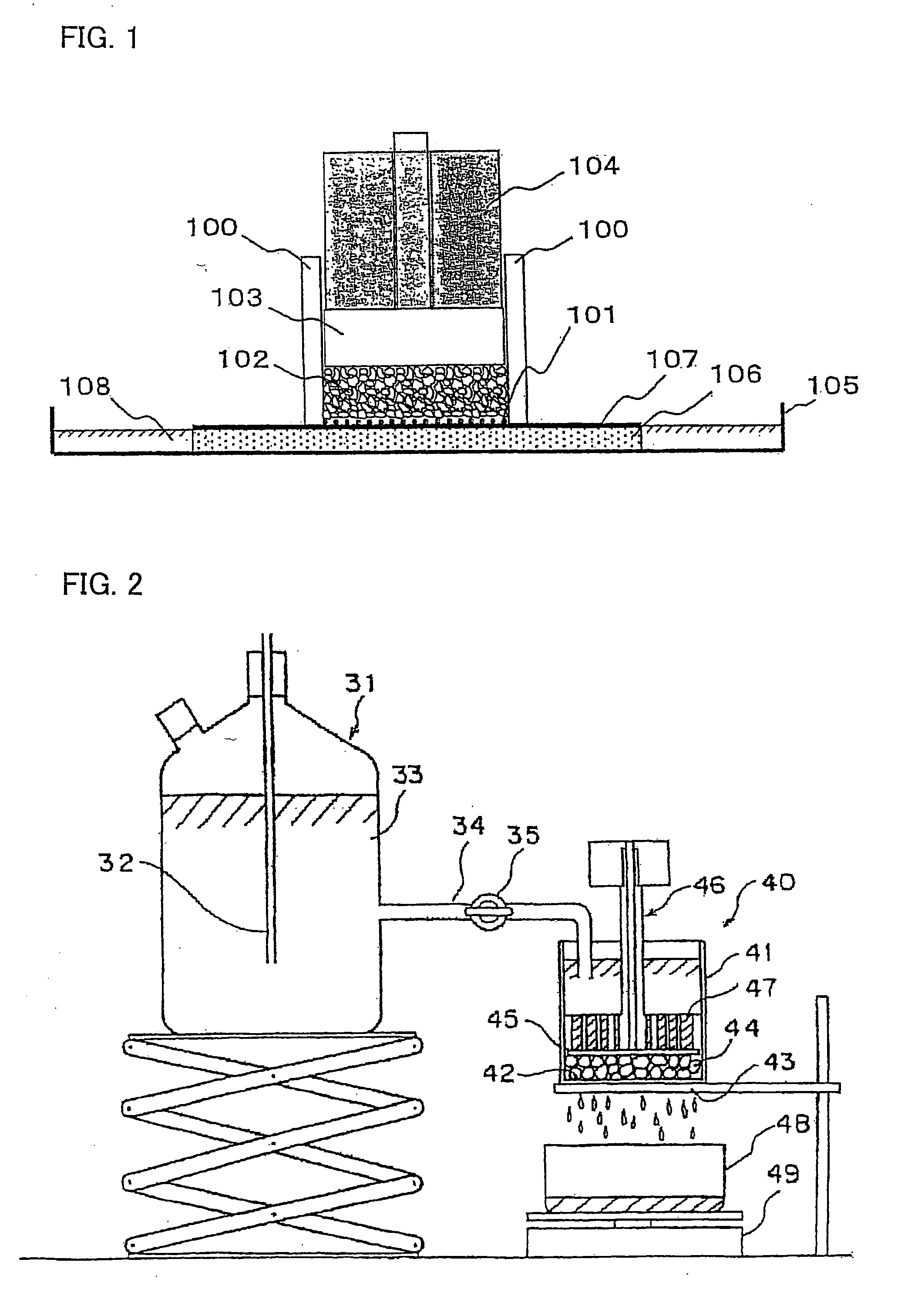Method for manufacturing particulate water-absorbing agent and particulate water-absorbing agent
a technology of water absorption agent and water absorption agent, which is applied in the field of manufacturing particulate water absorption agent, can solve the problems of reducing affecting the skin (skin disorders), and conventional technologies cannot realize both at the same time, so as to achieve excellent liquid diffusibility and liquid permeability, and reduce the amount of residual monomers.
- Summary
- Abstract
- Description
- Claims
- Application Information
AI Technical Summary
Benefits of technology
Problems solved by technology
Method used
Image
Examples
manufacture example 1
[0238] In a reactor made by lidding a jacketed stainless steel twin-arm kneader having two sigma blades and a capacity of 10 liters, 436.4 g of acrylic acid, 4,617.9 g of a 37 mass % sodium acrylate aqueous solution, 381.0 g of pure water and 11.40 g of polyethylene glycol diacrylate (molecular weight 523) were dissolved. Thus, reaction liquid was prepared.
[0239] Next, this reaction liquid was degassed for 20 minutes with nitrogen gas. Then, 29.07 g of a 10 mass % sodium persulfate aqueous solution and 24.22 g of a 0.1 mass % L-ascorbic acid aqueous solution were added to the reaction liquid while stirring. About one minute later, polymerization started.
[0240] Then, the polymerization was carried out at 20° C. to 95° C. while the generated gel was being pulverized. Hydrated gel crosslinked polymer was taken out 30 minutes after the polymerization started. The obtained hydrated gel crosslinked polymer was fragmented so that the diameter of each fragmented piece was about 5 mm or le...
example 1
[0242] 100 mass parts of the water-absorbing resin particles (A) obtained in Manufacture Example 1 was uniformly mixed with a surface crosslinking agent that was a liquid mixture of 0.4 mass part of 1,4-butanediol, 0.6 mass part of propylene glycol, 0.1 mass part of sodium persulfate and 2.7 mass parts of pure water. Then, the resulting mixture was subjected to a heat treatment of 200° C. for 30 minutes. Further, the particles were disintegrated so that the disintegrated particles can pass through the JIS standard sieve having a mesh size of 850 μm. Next, Paint Shaker Test 1 was carried out using the particles. Thus, a particulate water-absorbing agent (1) whose surface was crosslinked was obtained.
example 2
[0243] A particulate water-absorbing agent (2) was obtained in the same manner as Example 1 except that the heat treatment time was 40 minutes.
PUM
| Property | Measurement | Unit |
|---|---|---|
| temperature | aaaaa | aaaaa |
| particle diameter | aaaaa | aaaaa |
| water content | aaaaa | aaaaa |
Abstract
Description
Claims
Application Information
 Login to View More
Login to View More - R&D
- Intellectual Property
- Life Sciences
- Materials
- Tech Scout
- Unparalleled Data Quality
- Higher Quality Content
- 60% Fewer Hallucinations
Browse by: Latest US Patents, China's latest patents, Technical Efficacy Thesaurus, Application Domain, Technology Topic, Popular Technical Reports.
© 2025 PatSnap. All rights reserved.Legal|Privacy policy|Modern Slavery Act Transparency Statement|Sitemap|About US| Contact US: help@patsnap.com


